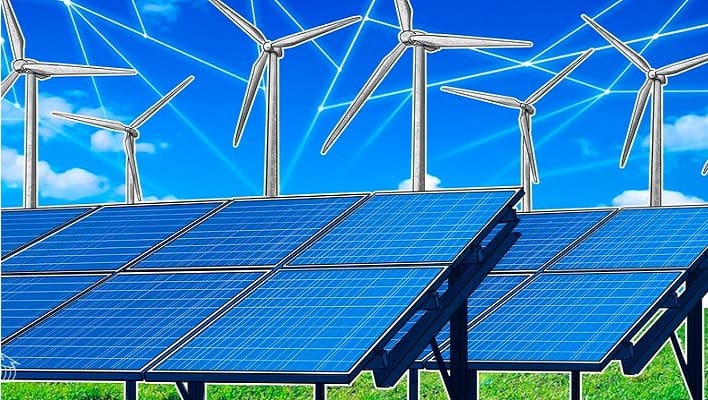Europe’s top renewable energy organisations are launching the Renewable Hydrogen Coalition today to give voice to businesses and thought leaders that will be decisive in positioning Europe as the world leader in renewable hydrogen, produced via electrolysis and based on 100% renewable electricity.
Comprised of WindEurope and SolarPower Europe, and supported by Breakthrough Energy, the coalition will build a high-level and interdisciplinary network of innovators, entrepreneurs, and corporate leaders from the rapidly growing renewable hydrogen community, including industrial off-takers. The Renewable Hydrogen Coalition is being announced alongside European Commissioner for Energy, Kadri Simson, under whose authority the European Commission presented an EU hydrogen strategy in July, setting the goal to produce 10 million tonnes of renewable hydrogen by 2030.
The launch of the new coalition coincides with the first edition of the EU Hydrogen Week. In a declaration to be released at the launch event, the coalition details the importance of renewable hydrogen in achieving the objectives of the European Green Deal and to reach climate neutrality. It will also help unlock the full decarbonisation potential of Europe’s economies, including end use markets such as aviation, shipping, and heavy industry.
The coalition’s goal is to empower Europe to build on its flourishing renewables industry, create a world class electrolyser industry, and develop the business models and markets that will make renewable hydrogen mainstream. It will inform the policy debate with concrete proposals for the scaling up and market uptake of renewable hydrogen – traceability, infrastructure investments, market design, and incentives. The coalition also calls on leaders to redouble their efforts in research and demonstration, while scaling up investments to bring new technologies to the market more quickly.
Giles Dickson, CEO of WindEurope, said: “To fully decarbonise energy in Europe we need renewable hydrogen. And it needs to be ‘made in Europe’. WindEurope is pleased to be part of this Coalition. We want to help build a strong European renewable hydrogen industry – based on European renewables.”
Walburga Hemetsberger, CEO of SolarPower Europe, said: “Europe is a world-leader in many renewable energy technologies, including the latest innovative applications of solar. Now is a golden opportunity for Europe to develop a robust and competitive renewable hydrogen industry, so it can lead the world in this decarbonisation solution. In order to ensure that the European Commission’s ambitious climate targets are met, and that all sectors are decarbonised before 2050, renewable hydrogen provides the missing link, and the Renewable Hydrogen Coalition is ready to amplify Europe’s position on this technology and provide the necessary network and input.”
Philip Hainbach, Head of Energy Policy and Governmental Affairs at Enapter, said: “Europe has the potential to become a technology leader in the promis
ing future market of green hydrogen generation. The new Renewable Hydrogen Coalition will be a great facilitator to enable this potential by advocating for the needs of innovative solutions like the AEM technology developed by Enapter.”
The ambitions of the Renewable Hydrogen Coalition are underpinned by a new white paper produced by Material Economics, a consultancy specializing in clean energy innovation and energy transition. A key insight of the report is that Europe could commercialise renewable hydrogen faster than current strategies suggest through value chain collaborations with end-product producers, similar to what the European Battery Alliance has done for electric vehicles. Other insights include:
Renewable hydrogen is a significant investment opportunity of €550-700 billion with an abatement potential of 450-550 Mt CO2 (or 10% of Europe’s annual emissions)
Europe could mainstream renewable hydrogen much faster than current strategies suggest through value chain collaborations with end-product producers.
There is significant ‘hidden demand’ in the European economy for green hydrogen, with 540 TWh potential demand unlockable in the near term and 1200-1400 TWh in the medium-term, provided there will be sufficient cost decreases, investments, and policy support.
To realise this potential, Europe needs to act with speed and scale in four areas: establish lead markets (e.g. green fertilisers and steel), mobilise massive investments (especially in renewables as over 280 GW dedicated capacity is likely needed), accelerate innovation from early-stage research through demonstration, deployment and scale-up, and establish enabling policies and standards.





































